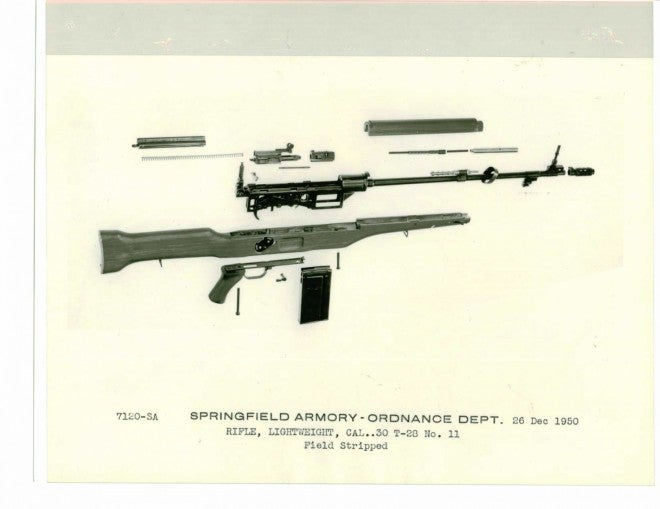For this week’s DTIC, we have a document that’s not so much significant as it is interesting. Round-Robin Comparison Test of Light Rifle Ammunition Caliber .30 is an early look into the program that would beget the 7.62x51mm NATO round.
An atom-sized history of the 7.62 NATO is probably called for. After World War II, the United States Army was looking to re-arm with a rifle that built on the experiences with the imperfect but decidedly revolutionary M1 Garand rifle. Further, they recognized that the .30-06 caliber was too large, and used too many resources per round, and sought to create a shorter, improved round that would retain the ballistics of the .30-06. Experiments began with .300 Savage cartridge cases loaded with M2 Ball projectiles (a combination designated “T65″), and the ammunition was improved until the cartridge case was 2.015″ long, sported a 20 degree shoulder, and had a 2.8” overall length when loaded with a general-purpose mild steel-cored bullet, the M59 Ball (originally T104E2). This was adopted by the brand-new North Atlantic Treaty Organization as their first standard infantry round, the 7.62mm NATO (the introduction of the .308 Winchester, also based on the T104E2’s FAT1E3 case, would happen 2 years later in 1952, meaning neither the .308 Winchester nor the 7.62 NATO are derivatives of the other, but both actually come from a common lineage). More information on the development of 7.62 NATO can be found here, here, and here. The definitive history of development will be available with the release of the third volume of Hackley, Woodin, and Scranton’s A History Of Modern U.S. Small Arms Ammunition.
The ammunition tested in Round Robin was T65E1, which had a 1.95″ long case and fired a steel-jacketed lead-cored 150gr flat-based bullet of the same design as M2 Ball, and the rifle used was the T28 – a roller-locked American derivative of the German Gerät 03. Like the Gerät 03, the T28 used a short-stroke SVT-like piston, stamped sheet metal construction, and a roller locking mechanism; the weapon was essentially a direct copy of the German design, but chambered for the new experimental cartridge.

The eleventh T28 produced. Very few original German Gerät 03s were made; it is possible that the Americans made more T28s after the war than there were Gerät 03s made during it. Image source: ar15.com.
The T28 rifle would end up as a dead end when development ceased in 1950, superseded by Earl Harvey’s T25 rifle, which was lighter. More pictures of the T28 rifle can be found in this thread on ar15.com.
(The nomenclature of the .30 Light Rifle cartridges that led to the 7.62 NATO is a very complex and easily confused subject. I hope I have correctly matched each designation to its proper item, but if I have made any mistakes, please point them out to me in the comments!)
 Your Privacy Choices
Your Privacy Choices
